| |
|
St John
the Baptist Maddermarket, Norwich
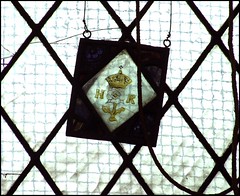 |
|
The
church is popularly known simply as St John
Maddermarket, and is famous for being the church
where the morris dancer Will Kempe ended his nine
days dance to Norwich from London in 1599. A
square church, and a familiar sight to shoppers,
where the pedestrianised identikit shops of
London Street give way to earthier Pottergate.
The suffix Maddermarket comes from adjoining
Maddermarket Street, and suggests a place where
dye for clothes was sold. The church was rebuilt
in a determined Perpendicular style in the late
15th Century. The nave is wide, the clerestory
unusually high. Was there ever a chancel? If so,
it had been demolished by the end of the 16th
Century, but there may well have never been one,
since the three east windows appear to have the
oldest tracery in the building. The south
door sits on the busy street, the north door is
reached by a long passageway past the
Maddermarket Theatre. There are no proper
porches, the north and south doorways opening
directly into the aisles. In the early 20th
Century they were joined by a narthex built under
the west gallery, echoing the processional way
which runs beneath the elegant but hemmed in
tower. This emphasises the sense of a church
which is wider than it is long.
|
George
Plunkett's photographs show the church as it was on the
eve of the Second World War, both views still fairly
familiar today. The church was declared redundant in the
early 1970s as a result of the Brooke Report, which is
perhaps understandable given the proximity of St Andrew
and St Peter Mancroft. For a while, it was used by the
Greek Orthodox community, but the building came into the
care of the Churches Conservation Trust, and is regularly
open, although perhaps not as often as it might be given
its location.
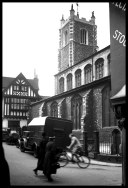 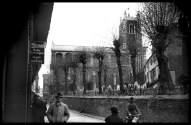
Stepping
inside to the dark, devotional interior, you might be
forgiven for thinking that the Greeks were still in
possession. In fact, this faux-baroque space is almost
wholly the work of William Busby, arch-Anglo-Catholic
Rector in the early years of the 20th century, much of it
collected from other churches, the rest made to his
orders. There is a feel, not so much of clutter, but of a
crowding within the enclosing walls of late 19th and
early 20th Century glass, and not even the dominating
18th Century baldachino, originally made for St Michael
Coslany, can fully draw the eye eastward without
distraction. Some fragments of medieval glass survive,
but much that was old was destroyed in a gas explosion in
the 1870s. A few noteable survivals are elsewhere, as we
shall see in a moment.
With the
exception perhaps of the 1870s east window installed
after the explosion, the glass is good of its kind. In
particular, Powell & Sons's Annunciation scene in the
north chancel chapel is outstanding.
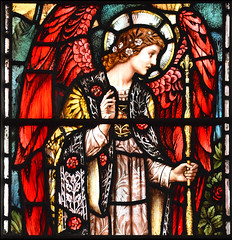 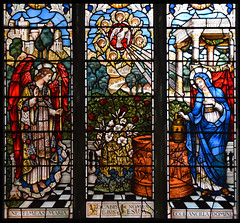 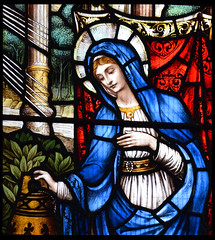
 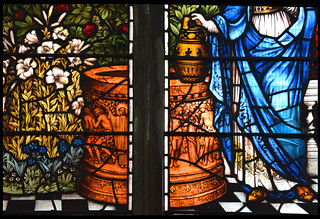 
The east window in the
south chapel, which is probably also by Powell &
Sons, depicts the Blessed Virgin surrounded by angels
holding shields of the instruments of the passion beneath
six female Saints in the upper lights. But it is the
other window on the south side above the priest's door
which is most memorable, showing a splendid Tree of Jesse
by the J&J King workshop of Norwich, installed after
the First World War. It is hard not to think that the
faces of the prophets are actually Norwich worthies of
the time.
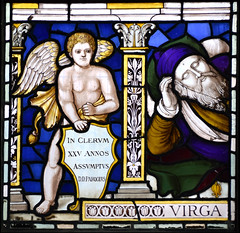 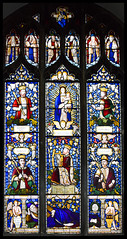 
 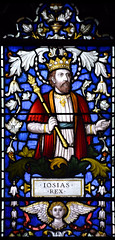 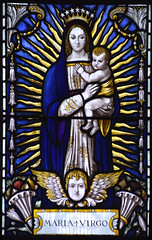 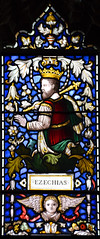 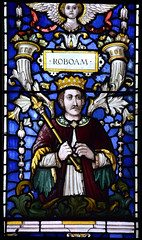
Missing from the
church is the medieval rood screen, which must have run
right the way across the nave. Surviving from it are some
of the panels, depicting Saints including St Agatha and
St William of Norwich, but today they are in the Victoria
& Albert Museum, along with some glass from a Norwich
church which is also likely to have been St John
Maddermarket.
 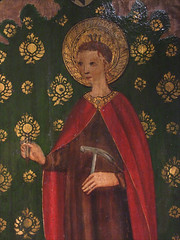 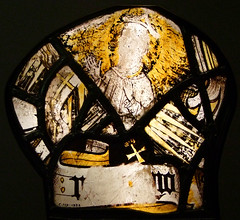
| Among
the surviving medieval fragments still in the
church are a fine figure of St Edward the
Confessor, and a heavily restored Christ figure
from a Coronation of the Blessed Virgin scene. St John
Maddermarket's splendid Anglo-catholic
reimagining by William Busby rather pushes the
number of memorials, both in brass and stone,
into the background, but they are worth a look.
Among them are the brass of John Tuddenham, who
died in 1450. He has a complete prayer clause
inscription in English. From the other side of
the religious divide are the two Sotherton
memorials, one of 1540 and the other of 1606, the
couple in each case facing each other across a
prayerdesk.
The
Sothertons were exactly the kind of family which
powered the English Reformation, mayors and
merchants who had benefited from the Black
Death's freeing up of capital and land to rise to
prominence. And here they are today, in all their
glory.
|
|
 |
Simon Knott, December 2017
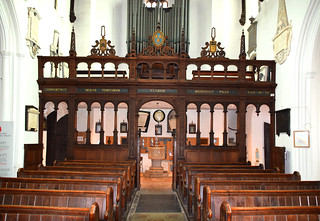
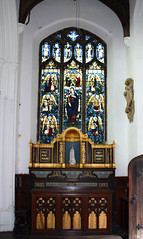 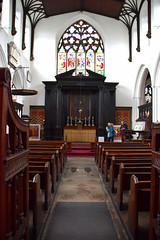 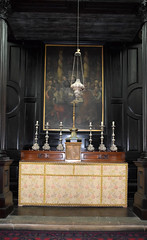 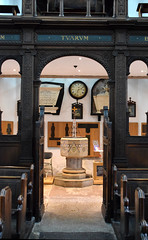
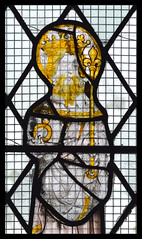  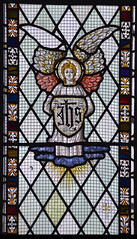 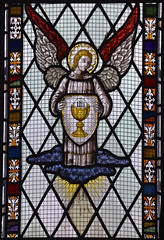 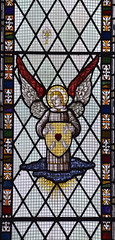
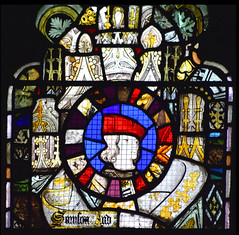 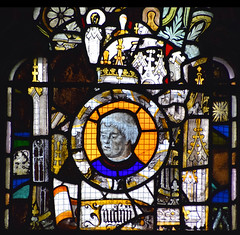 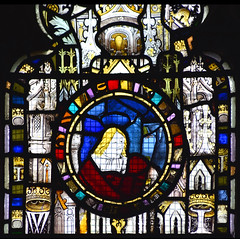
 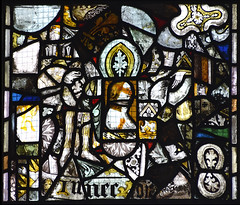 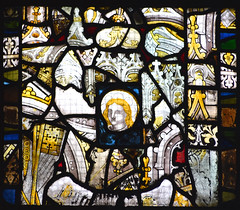
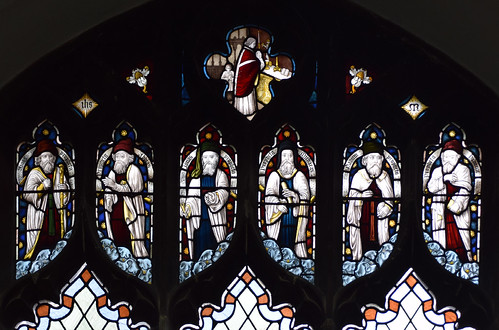
|
|
|
